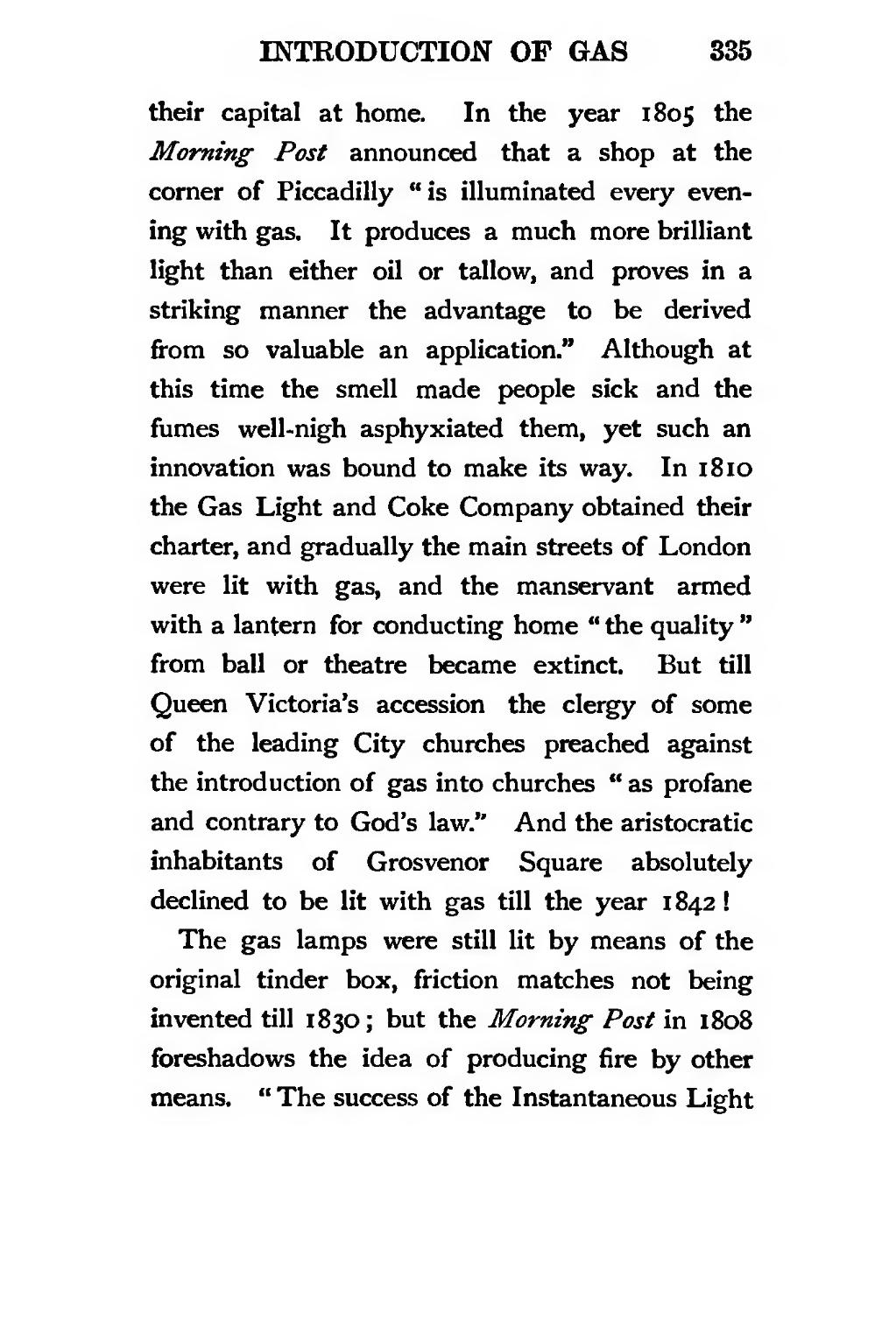their capital at home. In the year 1805 the Morning Post announced that a shop at the corner of Piccadilly "is illuminated every evening with gas. It produces a much more brilliant light than either oil or tallow, and proves in a striking manner the advantage to be derived from so valuable an application." Although at this time the smell made people sick and the fumes well-nigh asphyxiated them, yet such an innovation was bound to make its way. In 1810 the Gas Light and Coke Company obtained their charter, and gradually the main streets of London were lit with gas, and the manservant armed with a lantern for conducting home "the quality" from ball or theatre became extinct. But till Queen Victoria's accession the clergy of some of the leading City churches preached against the introduction of gas into churches "as profane and contrary to God's law." And the aristocratic inhabitants of Grosvenor Square absolutely declined to be lit with gas till the year 1842!
The gas lamps were still lit by means of the original tinder box, friction matches not being invented till 1830; but the Morning Post in 1808 foreshadows the idea of producing fire by other means. "The success of the Instantaneous Light
